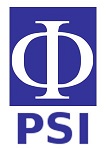Natural Sulfur Purification and Its Characterization for Lithium-Sulfur Battery
Abstract
Sulfur has great potential as a battery cathode material due to its high energy storage capacity. However, contaminants in natural sulfur can negatively impact battery performance and stability. This study aims to enhance the purity and crystallinity of natural sulfur from Kawah Ijen and Tangkuban Perahu using the dissolution-recrystallization method with toluene solvent at 100°C. By dissolving sulfur in toluene, impurities are separated, allowing pure sulfur to recrystallize. XRD analysis revealed that sulfur from Tangkuban Perahu exhibits a higher degree of crystallinity (88,4%) compared to sulfur from Kawah Ijen (75,620%). However, SEM-EDS results showed that sulfur from Kawah Ijen has higher elemental purity, with sulfur content of 91,159% and carbon content at 8,841%. These findings demonstrate that the dissolution-recrystallization method yields different results for sulfur from Tangkuban Perahu and Kawah Ijen. SEM-EDS is effective in measuring chemical purity, while XRD provides insights into the crystal structure. This comparative study highlights the significance of evaluating sulfur from different natural sources, revealing that the higher purity of Kawah Ijen sulfur makes it more suitable for Li-S battery applications. These results have significant implications for local sulfur processing industries, emphasizing the importance of purification techniques in producing high-quality sulfur for advanced Li-S batteries.
keywords: sulfur purification, dissolution-recrystallization, Li-S battery, sulfur purity, crystallinity
Full Text:
PDFReferences
K. Yang, Q. Gao, Y. Tan, W. Tian, L. Zhu, C. Yang, Microporous carbon derived from apricot shell as cathode material for lithium–sulfur battery, Microporous and Mesoporous Materials, Vol. 204 (2015), p. 235–241.
A. Manthiram, Y. Fu, Y.-S. Su, Challenges and prospects of lithium–sulfur batteries, Accounts of Chemical Research, Vol. 46 No. 5 (2013), p. 1125–1134.
P. Adelhelm, P. Hartmann, C.L. Bender, M. Busche, C. Eufinger, J. Janek, From lithium to sodium: cell chemistry of room temperature sodium–air and sodium–sulfur batteries, Beilstein Journal of Nanotechnology, Vol. 6 (2015), p. 1016–1055.
G. Benveniste, H. Rallo, L. Canals Casals, A. Merino, B. Amante, Comparison of the state of lithium–sulphur and lithium-ion batteries applied to electromobility, Journal of Environmental Management, Vol. 226 (2018), p. 1–12.
M. Liu, Y. Chen, K. Chen, N. Zhang, X. Zhao, F. Zhao, Z. Dou, X. He, L. Wang, Biomass-derived activated carbon for rechargeable lithium–sulfur batteries, Bioresources, Vol. 10 No. 1 (2014), p. 155–168.
A. Swiderska-Mocek, E. Rudnicka, Lithium–sulphur battery with activated carbon cloth-sulphur cathode and ionic liquid as electrolyte, Journal of Power Sources, Vol. 273 (2015), p. 162–167.
S.R. Wittiri, S. Sumarti, Kawah Ijen Penghasil Belerang Terbesar, Kementerian ESDM, (2010). https://www.esdm.go.id/id/media-center/arsip-berita/kawah-ijen-penghasil-belerang-terbesar (Accessed 11 Jun 2023).
OEC World, Sulfur in Indonesia, Observatory of Economic Complexity, (2023). https://oec.world/en/profile/bilateral-product/sulfur/reporter/idn (Accessed 11 Jun 2023).
I. Saputra, Pemurnian sulfur dari batuan sulfur alam dengan uap air menggunakan modifikasi proses frasch, Skripsi, Universitas Indonesia (2015).
K. Ganiarsa, Proses pemurnian sulfur dari batuan sulfur alam pada sistem steam autoclave dengan preinjeksi gas CO₂, Skripsi, Universitas Indonesia (2016).
University of Pittsburgh, Recrystallization, Organic Chemistry Resources, (1999). https://sites.pitt.edu/~bandik/organicweb/recrystallization.html (Accessed 5 Jul 2023).
PSIBERG Team, Recrystallization: Types, Procedure, Applications, PSIBERG, (2022). https://psiberg.com/recrystallization/ (Accessed 5 Jul 2023).
S. Suárez-Gómez, L. Bonavera, J. Carballido-Landeira, P. Blanco, F. Blanco, M.L. Sánchez, F.J. de Cos, Effective extraction of high purity sulfur from industrial residue with low sulfur content, Journal of Materials Research and Technology, Vol. 9 (2020), p. 8117–8124.
J.D. Wright, Molecular Crystals, 2nd ed., Cambridge University Press, Cambridge (1995).
A.Y. Lee, D. Erdemir, A.S. Myerson, Handbook of Industrial Crystallization, 3rd ed., Cambridge University Press (2019), p. 1–30.
R. Wunderman, Report on Ijen (Indonesia), Bulletin of the Global Volcanism Network, Vol. 27 No. 8 (2002). https://doi.org/10.5479/si.GVP.BGVN200208-263350
A.Y. Audi, C. Adiwijaya, Pra Desain Pabrik Produksi Insoluble Sulphur dari Sulfur Alam Telaga Bodas, Laporan Tugas Akhir, Institut Teknologi Sepuluh Nopember (2020).
S. Evers, L.F. Nazar, New approaches for high energy density lithium–sulfur battery cathodes, Accounts of Chemical Research, Vol. 46 No. 5 (2013), p. 1135–1143
DOI: https://doi.org/10.24198/jiif.v9i2.64980
Refbacks
- There are currently no refbacks.














